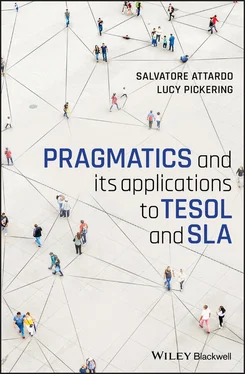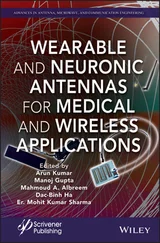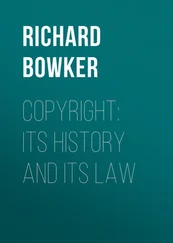Perhaps more significantly, children do not routinely perform language functions such as sarcasm, irony, or complex forms of teasing in the way in which adults do. Pexman et al. (2005) suggest that although children can recognize direct (as opposed to indirect) irony at 5 or 6 years old, they do not understand its humorous intent and will tend to identify with the target of the humor as opposed to the speaker’s humorous intent. The authors propose that this understanding continues to develop “late into middle childhood” (p. 259) and thus we would not expect these kinds of indirect language functions to develop in a parallel manner to adult learners. We will look at this again in Chapter 4.
2.6 Does the Learner Have to Sound Exactly the Same as a Native Speaker?
As Bardovi-Harlig and Mahan-Taylor (2003, p. 38) note “the consequences of pragmatic differences, unlike the case of grammatical errors, are often interpreted on a social or personal level rather than as a result of the language learning process.” Does that mean in order not to be misunderstood, an L2 learner must copy the performance of a native speaker? For Bardovi-Harlig and Mahan-Taylor the answer is a clear no. They argue that “the goal of instruction in pragmatics is not to insist on conformity to a particular target-language norm, but rather to help learners become familiar with the range of pragmatic devices and practices in the target language” (p. 38). This may include the use of different but acceptable alternatives to pragmalinguistic formulae such as an L1 transfer of an expression of gratitude, for example, may God increase your bounty (Kasper, 1992, p. 14). Both Grosjean (2015) and Eslami-Rasekh (2005) argue that not all L2 learners wish to perform identically to native speakers and suggest that language practices may vary between individuals for a host of reasons that have little to do with underlying competence and more to do with identity construction and distinctiveness as bilingual and bicultural speakers (see also the discussion of resistance to pragmatic norms earlier). At the opposite end of the spectrum, Piller (2002) interviewed adult L2 learners who thrived on “passing” as native speakers and investigated the practices they typically employed in order to do so.
2.7 Can Pragmatics Be Assessed in the Classroom?
The answer here is yes. Brown (2001) details a variety of ways in which different pragmatic features can be assessed from multiple-choice tests to role-play tasks. Brown (2008) finds that role-plays assessed by external judges were the most reliable and gave the best discrimination. Tada (2005) and Roever (2005) report good results with multiple-choice tests. Ishihara (2010), however, reminds us that teachers should keep in mind that “pragmatic norms among competent L2 speakers encompass a healthy degree of variation, which is why they are simply norms and not rigid rules” (p. 311). So, it is necessary to exert caution when grading so that one’s preferred answer does not become the only ‘correct’ answer. For example, in response to
(9) Would you like to pet my dog?
1 a. Hell, no!
2 b. Yes, please.c.
3 No, thank you.
clearly (9.a) is pragmatically inappropriate (impolite), but both (9.b) and (9.c) are acceptable.
Practically speaking, what are the best strategies for teachers, especially novice ones? Building a validated standardized battery of multiple-choice questions is probably not cost efficient for the average teacher, but the ease of administration/scoring and the consistency of the assessment recommend this testing approach. However, the artificiality of the setting means that the ecological validity of the data is compromised and that the assessment may not capture actual performance. Role-play may highlight this more effectively and can easily be retooled for assessment; for example, by asking students to perform a given communicative task and then assessing to what degree they were successful in doing so. However, teachers are not limited to those activities. One strategy is the learner as researcher assessment: the students collect their own data and do some degree of assessment on them. Class vocabularies/wikis, building small corpora, and other collaborative endeavors can also be used. Peer-evaluations also fit logically in the learner as researcher paradigm.
Intonation and prosodic choices can be assessed using videos and audio files easily available on the internet. For example, Ishihara (2010) suggests playing a video clip of a conversation and having the students discuss the affect of the situation, gestures, facial expression, and tone of voice. Picture prompts have the advantage that they are extremely easy to produce. They have the added advantage that they will not, as text prompts may, inadvertently bias the learners (Yamashita, 2008).
We note that this is only a brief overview of methods that might be effectively used, and that there are some current collections of essays that include significant attention to assessing L2 pragmatics in the classroom including Alcón Soler and Martínez-Flor (2008), Ishihara and Cohen (2010), and Ross and Kasper (2013).
In this chapter, we have identified some of the key questions that the field of interlanguage pragmatics has focused on. We have done this with a particular view toward the typical questions that TESOL teachers have often asked. There are, of course, a number of other areas of interest that we will address in later chapters such as the experience of multilingual speakers and the specific context of English as a Lingua Franca, as well as the ways in which these findings have been reflected in TESOL materials development.
1 1. Cross-cultural was originally used in anthropology to refer to a comparative study comparing two or more different cultures. Conversely, intercultural originally referred to the actual interactions between two or more cultural groups (i.e., language contact). Arguably, this distinction has been largely eroded and the terms are now used interchangeably as synonyms.
The reader will recall that philosophical semantics sees reference and truth as the central ideas needed to “explain” meaning. The theory of speech acts is a reaction against the view that language is used only to communicate about the truth of propositions. In fact, the idea is, to paraphrase Austin’s inspired title, that one can “do stuff” using words. So, besides describing the world, what can language do? Plenty of stuff as we will see.
We will start out by discussing the Ordinary Language school of philosophy and then focus on Austin and Searle. We will then characterize speech acts in terms of illocutionary force and felicity conditions to understand exactly how they work and this will then allow us to move on to indirect speech acts, the most complex and of course most rewarding concept of speech act theory. We will then pivot to the teaching of speech acts in SLA and TESOL.
3.1 Ordinary Language Philosophy, Oxford, and Austin
When considering the work of Austin, Searle, Grice, and their numerous followers, it is always good to remember that their formation belongs to the philosophical movement known as “ordinary language philosophy” associated with Oxford University, in England, and of which Austin was the first proponent. While both Searle and Grice disassociated themselves from ordinary language philosophy and moved on to considerations that are very different from it, there remains in their writings a clear influence from Austin.
Simply put, ordinary language philosophy starts from the assumption that language can tell us a lot about the way “things are.” After all, language encodes and reflects the experiences of many generations who have been interacting with reality. It would be very odd if it turned out to be that they had developed a tool to describe and affect reality that turned out to be completely wrong. Needless to say, this does not mean that language is a perfect match for reality, no one has ever claimed that, since after all there are countless examples of language lagging behind the discoveries of science (e.g., we say that the moon and the sun rise and set, which are relics of the Ptolemaic view of the universe with the earth at the center of the universe; whales and dolphins are often categorized as fish, while in reality they are mammals; tomatoes are considered a vegetable, while they are scientifically a fruit, etc.). If we move to social constructs such as institutions (kinship, laws, rituals) or beliefs (courage/fear, happiness/sadness, love/hate) that have no (or little) “empirical” existence outside of the social fact, the argument that language can tell us about reality becomes much stronger. Consider our earlier example of money: without the social agreement that we will exchange goods for printed paper of a certain kind, color, shape, and so on, it makes no sense at all to ask ourselves why a 10 dollar bill is valuable. The value of the 10 dollar bill comes from its use within the community as a 10 dollar bill. The meaning of words, sentences, and so on similarly comes from the same kind of social convention.
Читать дальше












